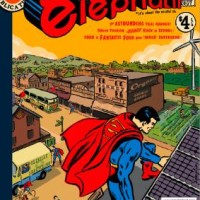I just got back from teaching at two different retreat centers (shambhalamountaincenter.org and kripalu.org) in two different mountain ranges (Rocky Mountains and the Berkshires) with one theme: Getting Unstuck! Isn’t that really what our yoga or meditation practice is all about? If we were perfectly happy in our little ruts, doing everything the same way all the time, we’d be like my poodle, Leroy—who has to turn in a circle six times before sitting down, every single time. But we are members of the human realm—dissatisfied with how things are and yet resistant to change. You could say that our primary job is to find a resolution to this basic conundrum, a.k.a. the Buddha’s First and Second Noble Truths.
The good news is that, at our local yoga studio, we can access several time-tested methods of “Gom”—yogasana, meditation and pranayama. Gom refers to techniques for getting to know oneself, methods of familiarization. The first step toward getting unstuck, shaking out the rug and changing our attitude is Gom: take a long look in the mirror. This requires honesty. (For more: find Cyndi’s article on “Honesty” for the Shambhala Sun at omyoga.com)
Honesty requires space, opening, patience, persistence, commitment. But when that seems overwhelming, we go back to Gom: experiencing our breath, watching our mind, feeling our body.
Supta Baddha Konasa [see page 24] is a perfect pose for creating the conditions for an opening to happen, for things (you) to get unstuck. While in supta baddha konasana, you can practice a variety of mind/body/breath exercises:
>>> Observe your breath as it is, naturally.
>>> Observe the breath in your right side, then your left side—what do you notice?
>>> What happens to the pubic bone on the inhale? The tailbone on the exhale?
>>> Inhale for 6 and exhale for 6, do 5 sets, then breathe naturally, repeat.
>>> Breathe in and notice the natural gap that occurs before you exhale. Observe how your mind and body respond to this gap when you place attention on it.
Sit quietly and observe the effects of your practice. Then get up and move through the world. At the end of the day, review your day without guilt and see what shifts may or may not have occurred. Whatever you discover will
be interesting!
Ready to join?
Hey, thanks so much for reading! Elephant offers 1 article every month for free.
If you want more, grab a subscription for unlimited reads for $5/year (normally, it's $108/year, and the discount ends soon).
And clearly you appreciate mindfulness with a sense of humor and integrity! Why not join the Elephant community, become an Elephriend?
Your investment will help Elephant Journal invest in our editors and writers who promote your values to create the change you want to see in your world!
Already have an account? Log in.
Ready to join?
Hey, thanks so much for reading! Elephant offers 1 article every month for free.
If you want more, grab a subscription for unlimited reads for $5/year (normally, it's $108/year, and the discount ends soon).
And clearly you appreciate mindfulness with a sense of humor and integrity! Why not join the Elephant community, become an Elephriend?
Your investment will help Elephant Journal invest in our editors and writers who promote your values to create the change you want to see in your world!
Already have an account? Log in.
Ready to join?
Hey, thanks so much for reading! Elephant offers 1 article every month for free.
If you want more, grab a subscription for unlimited reads for $5/year (normally, it's $108/year, and the discount ends soon).
And clearly you appreciate mindfulness with a sense of humor and integrity! Why not join the Elephant community, become an Elephriend?
Your investment will help Elephant Journal invest in our editors and writers who promote your values to create the change you want to see in your world!
Already have an account? Log in.
 Share on bsky
Share on bsky





Read 3 comments and reply